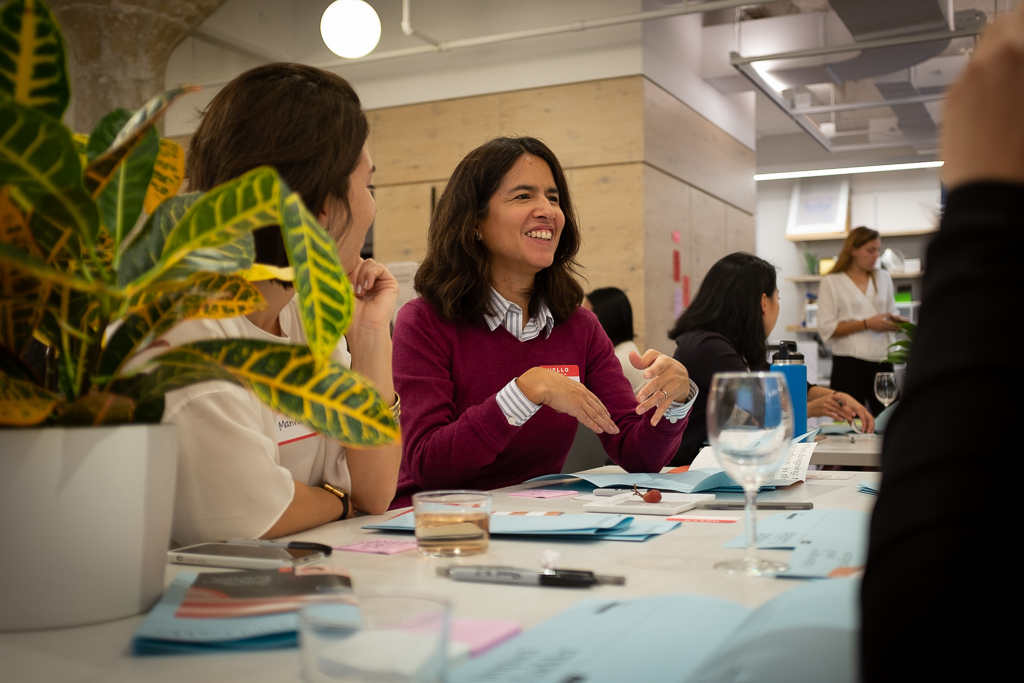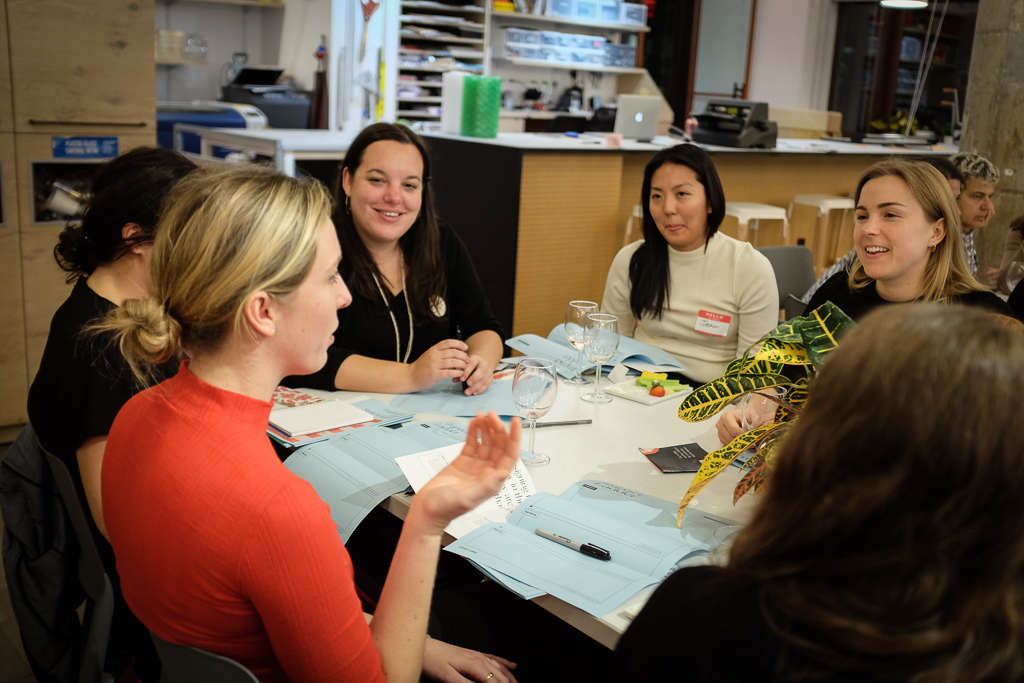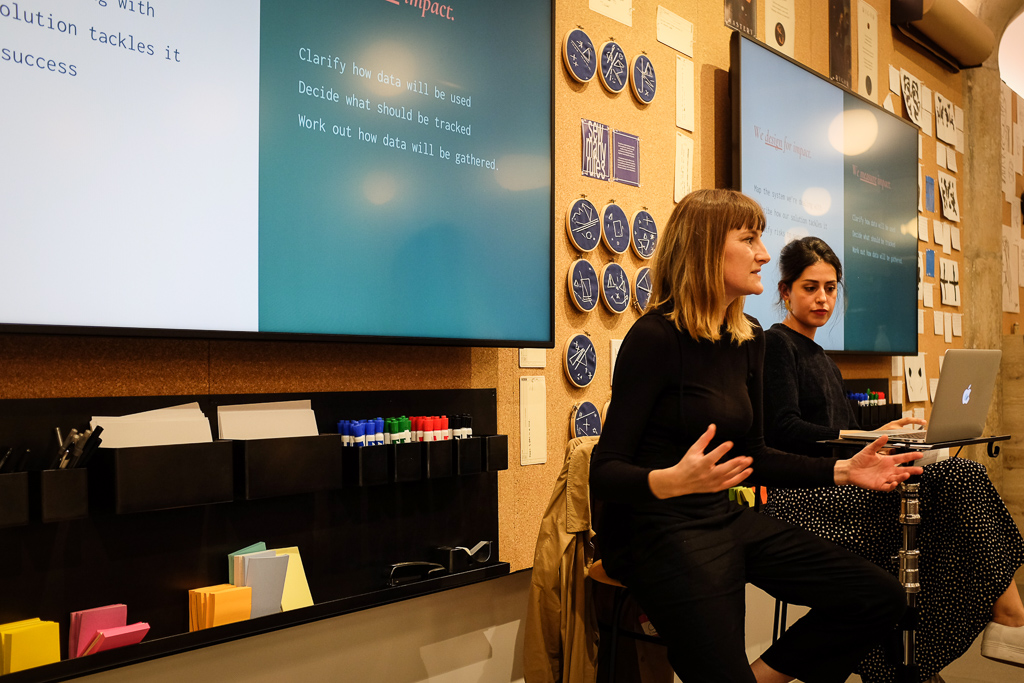Event Recap: WIN NYC x IDEO.org, Bringing Impact to the Forefront of Innovation
As women in innovation, we’re driven to create meaning and impact through our work. But what exactly is impact and how do we work towards achieving it? WIN NYC asked and answered this question in an intimate workshop with IDEO.org, lead by IDEO.org Director of Impact, Chris Larkin, and WIN Ambassador, Aya Jaffar.
Unlike IDEO, the global design and innovation company, IDEO.org solely focuses on designing products, services, and experiences to impact people in poor and vulnerable communities. Using IDEO.org’s frameworks, we brainstormed how we can design our own projects to make an impact–whether our goals are for internal impact within an organization or external impact through project work.
Chris and Aya taught us the following two methods in designing for impact, which are overlapping and iterative rather than linear.
The Impact Ladder
The Impact Ladder is a frame of thinking that shows how innovation can lead to broad impact through four steps. To understand the Impact Ladder, we looked at how the automated washing machine changed the world. When we invented washing machine (and other tools) saved women hours in housework, which in turn meant more women could enter into the labor market. More women in the workforce led to growing economic empowerment for women.
As innovators, we have inputs (activities) that we invest into a project. This is followed by outputs (solutions) we put into the world (i.e. the washing machine). The solution creates an outcome for users–perhaps changing what they think, feel and do (i.e. women spend less time washing clothes and more time engaging in the workforce). The last step of the ladder is impact, defined as a significant and positive change in a pressing social, economic, or environmental challenge (i.e. greater autonomy and equality for women).
Chris and Aya shared that we use the Impact Ladder to design for impact and then measure that impact, however it can be tempting too often focus only on the output and outcome. By focusing on each rung of the ladder, you can close gaps between what you are currently doing and what you want to do next.
Pathways and Stakeholders
The Pathways and Stakeholders framework is underpinned by the idea that no user is alone in their experience. There are a number of drivers and barriers that influence users that may arise before and as your project develops. When designing for impact, this play reminds you to think about the user at the center of a system, surrounded by communities, services, and institutions.
User: To begin, think about the primary outcome we are helping the user achieve. What does the user need to think, feel and do to get to this outcome? What barriers are currently preventing the user from these things already?
Community: Map out the social network around the user. For each group that affects the user’s journey towards change, do they support or impede the individual? There are likely different power dynamics between the user and their community, which can help you understand how influential the group is upon the individual.
Services: Consider the quality of services and service providers in the user’s community and what sort of power they hold over users.
Institutions: The final stakeholders to consider are the formal institutions, laws, and policies which influence the environment in which we are trying to make an impact. These institutions may act as barriers that other people are already trying to adapt, or the institutions might be enablers we need to harness.
To Conclude…
Rarely does an innovative product immediately change lives without being thoughtfully designed for impact. This session taught us how to think more carefully about impact, a helpful frame of mind as we all work to be change-makers in our own organizations, side hustles, personal projects, and out there in the world.
Written by Emma Anderson, Katie Oberwager, and Katie Burwick. Huge thank you to the team at IDEO.org, including Aya Jaffar.
Photos by May Shek.
WIN: Women in Innovation Copyright (c) 2019 All rights reserved. This content may not be reproduced or repurposed without written permission from WIN: Women in Innovation (501(c)3). This content, including the exercise and blog post, is provided for your personal use only.








